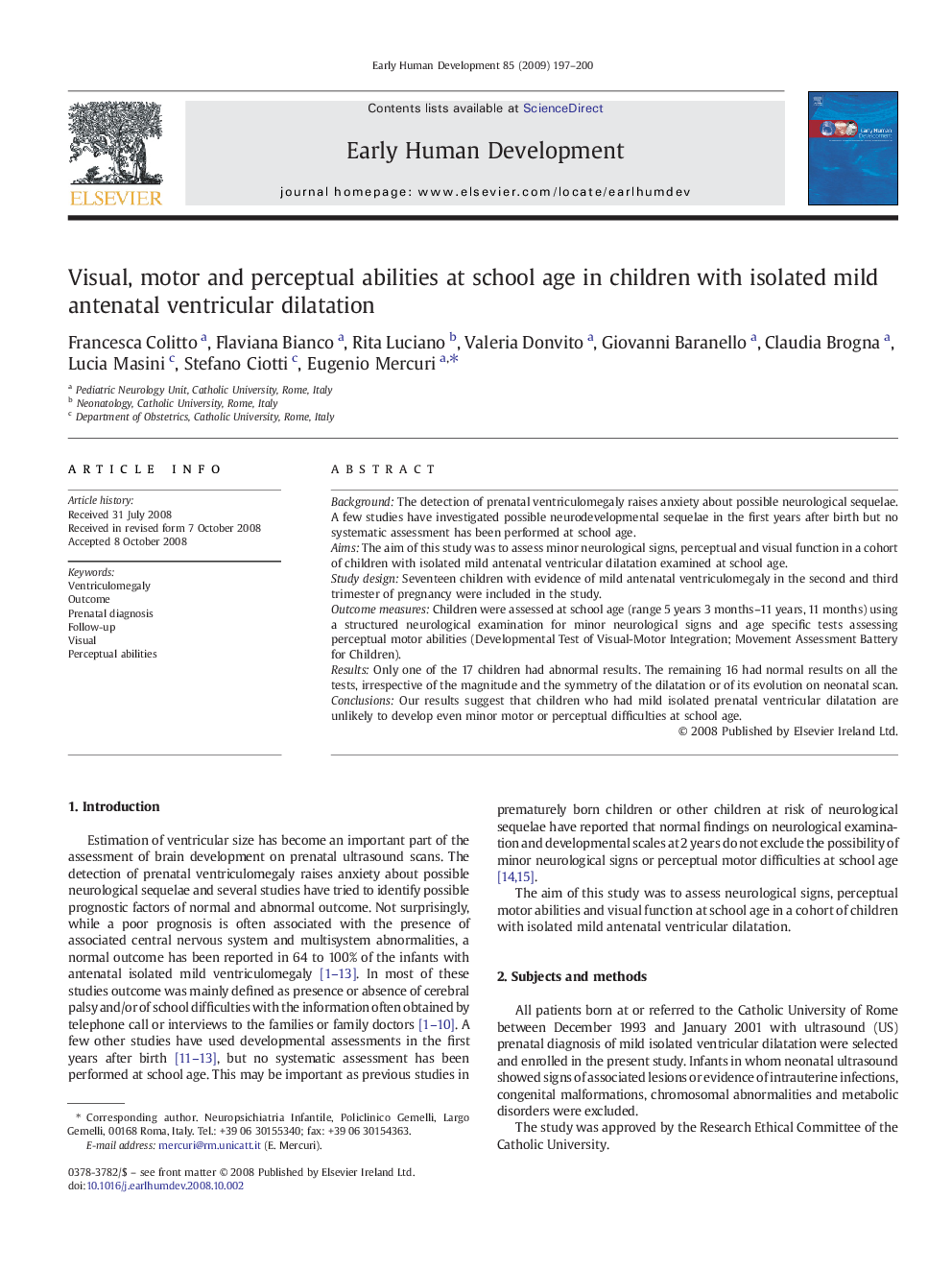| Article ID | Journal | Published Year | Pages | File Type |
|---|---|---|---|---|
| 3917901 | Early Human Development | 2009 | 4 Pages |
BackgroundThe detection of prenatal ventriculomegaly raises anxiety about possible neurological sequelae. A few studies have investigated possible neurodevelopmental sequelae in the first years after birth but no systematic assessment has been performed at school age.AimsThe aim of this study was to assess minor neurological signs, perceptual and visual function in a cohort of children with isolated mild antenatal ventricular dilatation examined at school age.Study designSeventeen children with evidence of mild antenatal ventriculomegaly in the second and third trimester of pregnancy were included in the study.Outcome measuresChildren were assessed at school age (range 5 years 3 months–11 years, 11 months) using a structured neurological examination for minor neurological signs and age specific tests assessing perceptual motor abilities (Developmental Test of Visual-Motor Integration; Movement Assessment Battery for Children).ResultsOnly one of the 17 children had abnormal results. The remaining 16 had normal results on all the tests, irrespective of the magnitude and the symmetry of the dilatation or of its evolution on neonatal scan.ConclusionsOur results suggest that children who had mild isolated prenatal ventricular dilatation are unlikely to develop even minor motor or perceptual difficulties at school age.
